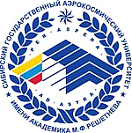Aviation
Aircraft can quickly carry people and cargoes to enormous distances and reach areas inaccessible for road transport, which is invaluable in the case of Russia’s vast distances. Historically, our country used to be one of the leaders in aircraft construction and air transportation, but lost this status. However, the sector has been recovering lately, including segments of small aircraft systems, regional airports, etc. Substantial technological breakthroughs are expected in the area, which will have ever-increasing importance in the future.
Air transportation will become more affordable and diverse. General aviation is developing fast, and within 10 to 15 years, aircraft may appear that will be cost comparable in price to automobiles. In 2012, the Finnish aircraft engineer Aki Suokas presented a prototype of the 70 kg single seat aircraft FlyNano, able to rise to 3,000 meters, moving at a speed of 140 km/h. The device is not for sale yet, but can be pre-ordered for EUR35,000.
In addition, unmanned aviation will also progress rapidly. Cities will use unmanned aircraft to deliver cargoes, for construction, or to monitor traffic and security. For example, the Massachusetts Institute of Technology has created the SkyCall quadcopter to help people find their way in unknown locations. Whenever lost, you can use your smartphone to ask the drone for assistance. Russia has been the first country to use quadcopters for pizza delivery, with the company Copter Express offering the service to its clients.
The airship segment will also gain a second life, with new airships using advanced technology, which will be used in hard-to-reach areas (e.g. to extinguish forest fires and deliver cargoes). Intensifying air traffic will require new and improved ground control systems. This will impose new requirements on infrastructure construction and intelligent control support systems.
The aircraft construction industry is undergoing changes as well. First of all, the application of composite materials allows manufacturers to reduce the weight and increase the durability of aircraft. For example, half of the Boeing 787 Dreamliner is made of composites. Other important factors will be the advance of intelligent control systems (in particular for large craft, such as cargo planes), active threat protection systems, as well as the use of biofuels and transition to electric engines.
Professions
Dynamic control smart management system designer
Professional in designing software for air traffic control over traffic-intensive cities and regions (in case of a significant growth of unmanned and general aviation, with sharply increased loads on the airspace and a shift toward flexible traffic management).
Trends
Professional skills and abilities
Airship infrastructure designer
Specialist designing airfields, hangars, maintenance depots and navigation infrastructure components for airships. Airships can be used to deliver cargoes and passengers to places that are hard to reach due to poor transport infrastructure. For example, the Russian-based Amur Minerals Corporation is considering a possibility of heavy equipment delivery by airships to a road construction site. The road will cost around $150 million.
Trends
Professional skills and abilities
Aircraft recycling technologist
Specialist in the development of recycling procedures for basic materials, equipment and aircraft framework components.The job already exists. There is the Aircraft Fleet Recycling Association, which includes major producers (such as Boeing, Bombardier), engine producers (Pratt&Wittney, Rolls-Royce), recycling companies, and many others.
Trends
Professional skills and abilities
Unmanned flight interface designer cross-professional skills
Professional who designs interfaces and software packages for unmanned aircraft control; responsible for programming and operating the support, navigation and safety systems of unmanned aircraft.
Trends
Professional skills and abilities
Airship designer
Specialist tasked with designing airship models according to their applications (cargo/passenger) and aeronautical conditions.
Trends
Professional skills and abilities
Operating data analyst
Professional in processing data and preparing expert opinions based on the monitoring of the aircraft and surrounding area.
Trends
Professional skills and abilities
Small aircraft production engineer
Specialist designing and modelling affordable aircraft of various complexity for general aviation. Appropriate engineers are already available, but the growth of general aviation (e.g. in the Far East) is predicted to raise demand for them.







































